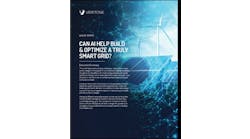By Reid Smith
September 11, 2008
Vehicles account for 26% of the nation’s carbon dioxide emissions, and 51% of the average household’s daily CO2 output (http://www.fueleconomy.gov/feg/climate.shtml), according to the U.S. Environmental Protection Agency. So, clearly fuel economy is critical to reduce greenhouse gas emissions.
Big car manufacturers, like GM, Ford and Toyota, have seen a dramatic drop in recent sales. In response, they are beginning to make smaller, more fuel-efficient, vehicles, as well as step up research on new fuels. GM announced development of the battery-powered Chevy Volt, set to be released in 2010. This is a much needed move in the right direction.
However, we need more revolutionary change. The solution, it seems, will come from companies that are reaching far outside traditional lines of thought and coming up with truly innovative ways to fuel our cars. One such company, Motor Development International (MDI) (www.mdi.lu) of France, has developed a vehicle that can run almost exclusively on compressed air, and therefore only emits air. MDI, which is headed by Guy Negre, founded the company in the 1990s in pursuit of a new environmentally friendly engine that was also cost competitive.
The car runs on compressed air at speeds up to 35 mph. Then conventional fuels kick in – fossil fuels or biofuels. These cars could be particularly effective in reducing city pollution, since we tend to drive slower on urban roads.
One tank of compressed air lasts up to 93 miles before it needs to be filled. The tank can be plugged into a standard electrical outlet and filled in about four hours. It is also possible to refill the tank much more quickly – in as little as three minutes using a high-pressured air pump.
How does the car work? The air tank is made of ultra-light carbon fiber and holds 52 gallons of air. From the tank, air is forced through an injector to the engine, where it expands and pushes down on pistons that turn the crank shaft, which propels the car.
Although the air car needs to be as light as possible for maximum efficiency, these cars are not necessarily small, and several models are already under development. A two-seater, the OneCat is one option. A three-seater, the MiniCat is another option. A six-seat sedan, the CityCat; and a compact truck. The company plans to introduce a six-seat, four-door family-size version to the U.S. market in 2010 according to Popular Mechanics http://www.popularmechanics.com/automotive/new_cars/4251491.html?series=19. This model is expected to achieve over 100 mpg and over 90 mph, emit little or no CO2, offer plenty of space for luggage, meet all safety requirements, and cost no more than an average economy to mid-size vehicle.
Tata motors (www.tatamotors.com), India’s largest car manufacturer and leading company for automotive R&D has already signed a contract with MDI, and cars hit the streets there at the end of August. The deal provides MDI with a significant capital infusion to further the technology and get it ready for the mainstream public.
The air car is just one example of innovative, affordable, and environmentally clean cars being developed all around the world. The next decade will bring monumental changes to the auto industry as priorities in car design shift and consumers demand change. Cars ten years from now will be very different from those we drive today. What remains to be seen is whether the US cornerstone car companies will adapt to these changing technologies or if foreign innovators will drive off with the market.
Visit energy writer Reid Smith at www.realenergywriters.com and subscribe to his free EE Markets newsletter and podcast.







